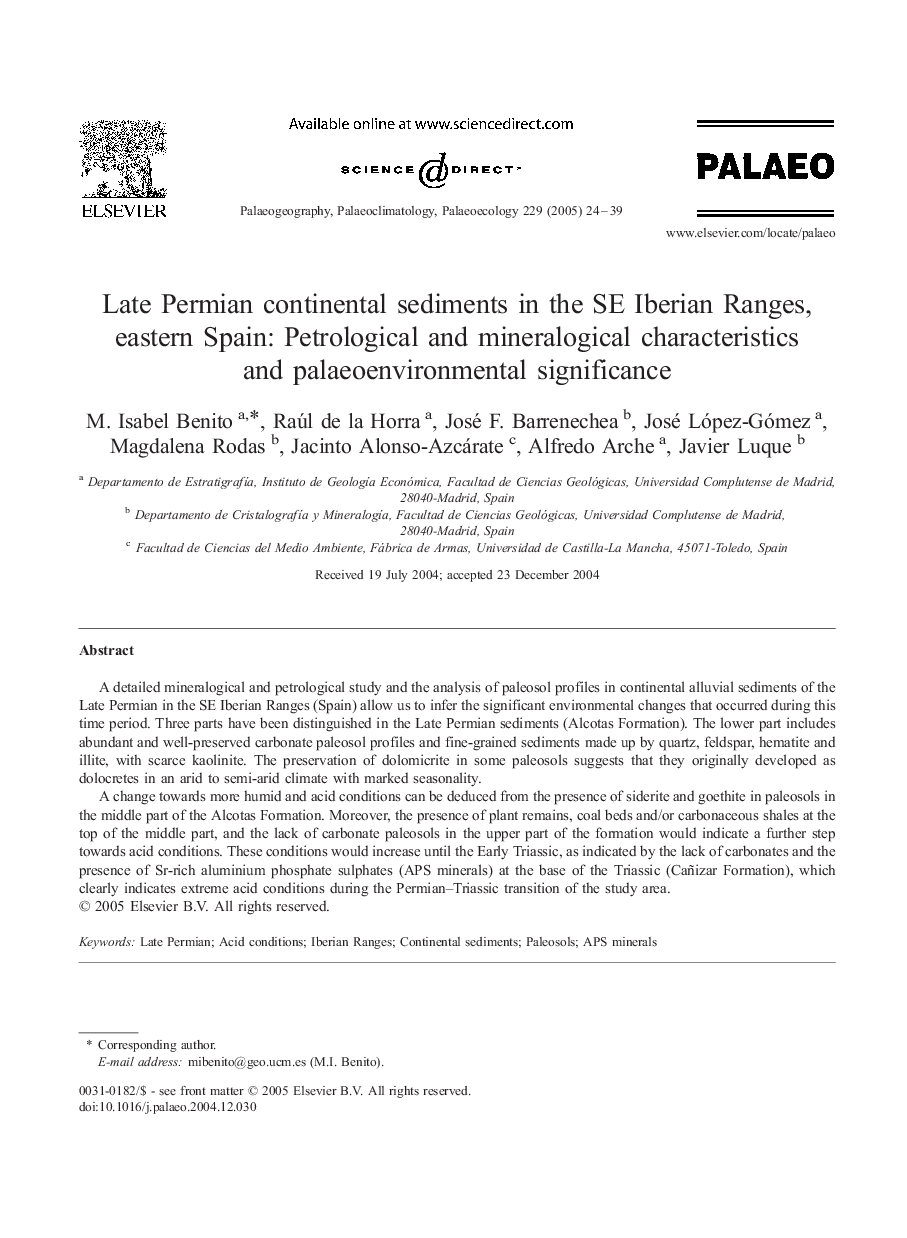| Article ID | Journal | Published Year | Pages | File Type |
|---|---|---|---|---|
| 9462905 | Palaeogeography, Palaeoclimatology, Palaeoecology | 2005 | 16 Pages |
Abstract
A change towards more humid and acid conditions can be deduced from the presence of siderite and goethite in paleosols in the middle part of the Alcotas Formation. Moreover, the presence of plant remains, coal beds and/or carbonaceous shales at the top of the middle part, and the lack of carbonate paleosols in the upper part of the formation would indicate a further step towards acid conditions. These conditions would increase until the Early Triassic, as indicated by the lack of carbonates and the presence of Sr-rich aluminium phosphate sulphates (APS minerals) at the base of the Triassic (Cañizar Formation), which clearly indicates extreme acid conditions during the Permian-Triassic transition of the study area.
Keywords
Related Topics
Physical Sciences and Engineering
Earth and Planetary Sciences
Earth-Surface Processes
Authors
M. Isabel Benito, Raúl de la Horra, José F. Barrenechea, José López-Gómez, Magdalena Rodas, Jacinto Alonso-Azcárate, Alfredo Arche, Javier Luque,
